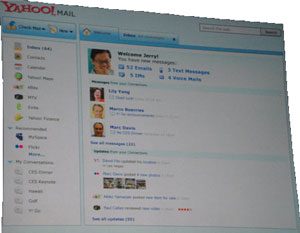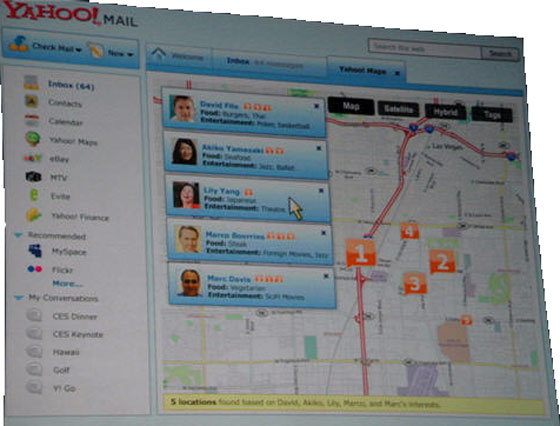 Yahoo didn’t just announce their new open mobile platform today at CES. They also got the heavyweights – Jerry Yang and David Filo – up on stage to give more details on the project they’re calling Yahoo Life! (previously dubbed “Inbox 2.0“). [Update: A Yahoo spokesperson clarifies that although Yang kept talking about “Life!” onstage, the project is not actually called that. It is not called anything. So we’ll call it Yahoo Life! to distinguish it from the current version of Yahoo Mail.]
Yahoo didn’t just announce their new open mobile platform today at CES. They also got the heavyweights – Jerry Yang and David Filo – up on stage to give more details on the project they’re calling Yahoo Life! (previously dubbed “Inbox 2.0“). [Update: A Yahoo spokesperson clarifies that although Yang kept talking about “Life!” onstage, the project is not actually called that. It is not called anything. So we’ll call it Yahoo Life! to distinguish it from the current version of Yahoo Mail.]
Everyone wants to be more like Facebook these days, and Yahoo is no exception. Google’s strategy is Open Social, a set of open APIs that allow third parties to embed stuff on other third parties. The cornerstone of Open Social for Google is Gmail, where all the action happens for a user (and to a lesser extent Orkut and iGoogle). Yahoo’s going in much the same direction, it seems, by making Yahoo Mail the center of their new social networking strategy.
The new product is only a proof of concept at this point, Yang said. The goal is to unite services like mail, search, etc. under a social framework, with Yahoo Mail serving as the central hub. Your email and Im contacts serve as your contacts and fill out the social graph. Their closeness to you is based on how frequently you communicate with them.
An example, via Dan Farber:
He gave an example of planning a dinner for CES. You can drag the thread into a map and it will bring up the profiles of those on the mail, note preferences (for food in this case) and suggest restaurants in the area. You can also take an email message, pop up the profiles of those on the message, takes an address from email and show it a map.
And third party applications aren’t being left out. The image above clearly shows integration with MySpace, for example. This is where Yahoo’s ambitions around Zimbra, which it acquired late in 2007 for $350 million, become more clear. The new platform for developers is based in part on Zimbra’s technology.
The first pieces of this strategy were being put in place as far back as late 2006, when Yahoo began rolling out integration of Yahoo Mail and instant messaging. Messages can now seamlessly transfer back and forth between IM and email, something no other web mail application does. It’s clear that even then Yahoo was thinking long term about the future of the mail interface.
It’s unfortunate that Yahoo, which has had a muddled past at best with regard to social networking, is referring to the product as “Life.” It’s too close to Microsoft’s Live strategy of bucketing online services under a new brand. It’s gone nowhere but sideways over the last couple of years, and shows that repackaging and marketing do little to drive user adoption in today’s Internet.
But the name aside, and despite my previous criticism, Yahoo Life looks like an intelligent social architecture for Yahoo. Assuming all this social networking stuff isn’t just a fad (it isn’t), then it makes sense for Yahoo to focus their resources in this fight. Of course, developers will now have yet another platform to build to, beyond the Facebook and Google ones that exist today.
All images are courtesy of Dan Farber.
